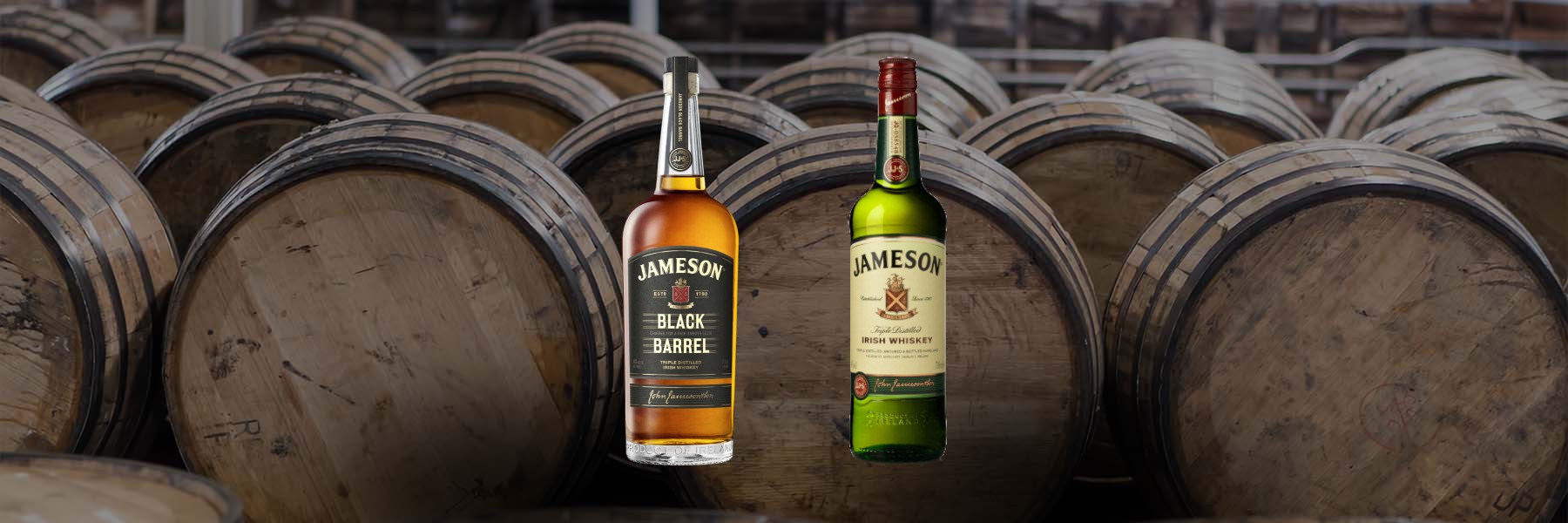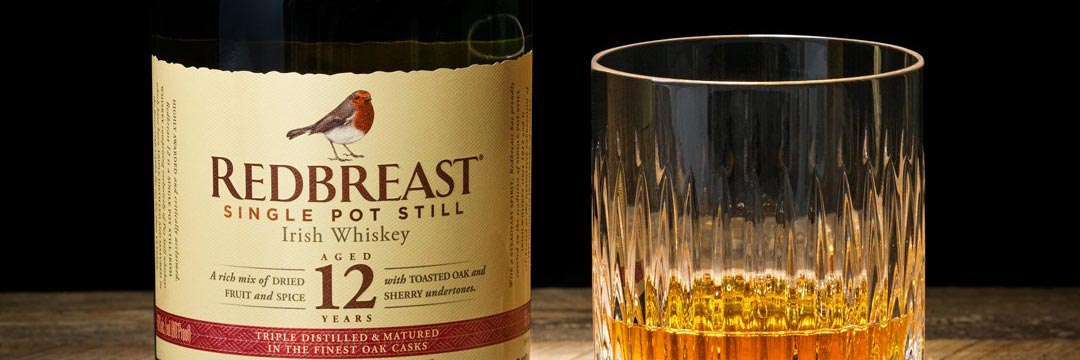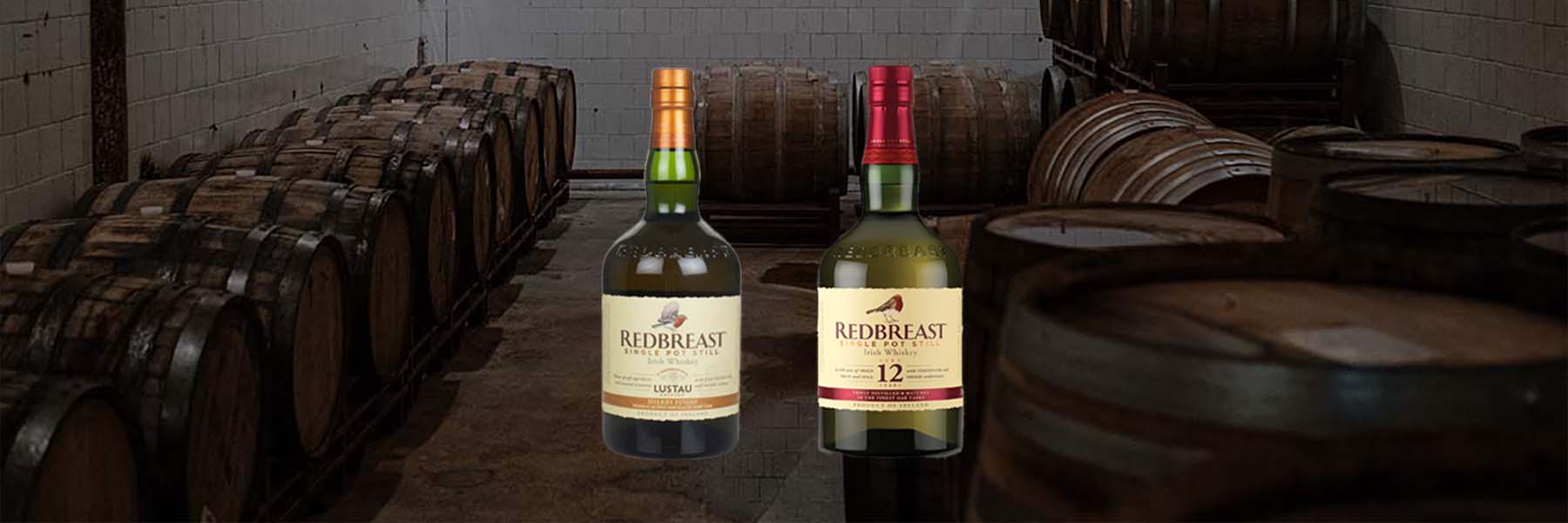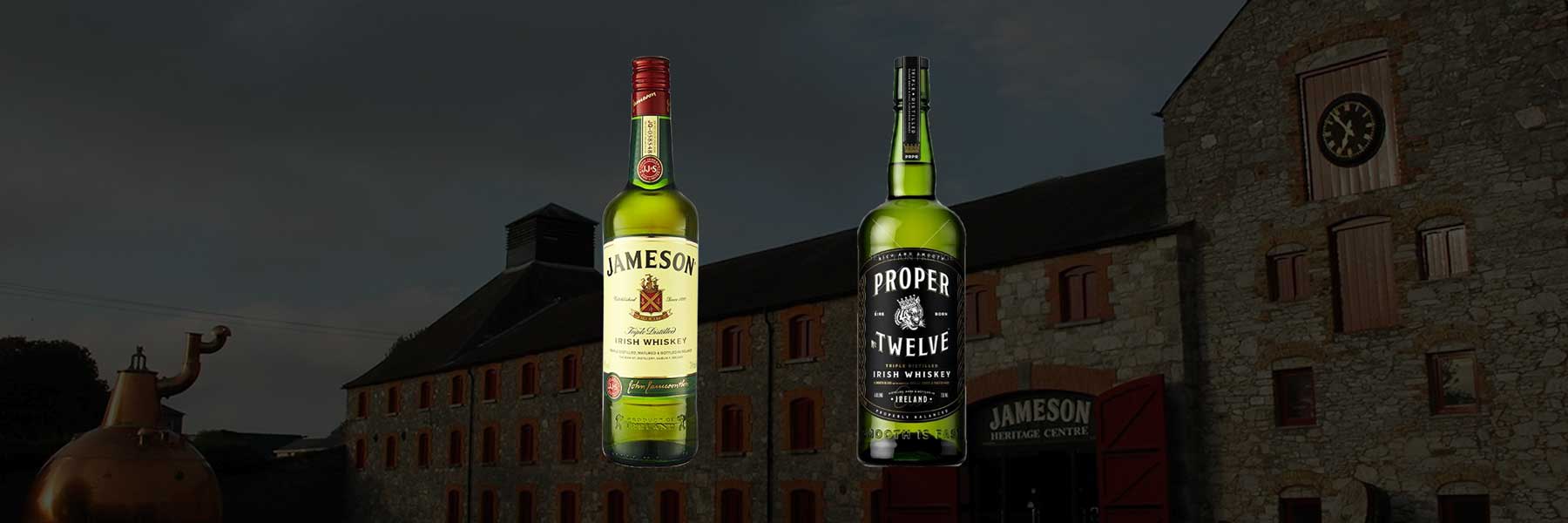Maker’s Mark vs Jameson | Choosing between whisky and whiskey
Last updated on August 22nd, 2024
Every whisky brand has their hero bottles, which, more often than not, are their entry-level expressions. Maker’s Mark and Jameson are fine examples, each offering their affordable but oh-so popular signature whiskies.
Both are category-defining spirits that offer their own unique flavour profiles and have long been considered some of the finest in their respective fields. In this blog post, I’ll explore both brands by taking an in-depth look at their signature bottles – Maker’s Mark vs Jameson Irish whiskey.
I’ll discuss each one’s aroma, taste profile, price value, as well as other characteristics to help guide you towards making an informed decision about which brand is best suited for your needs. So if you’re ready to find out more about these two classics, let’s get started.
Quick brand overview
Maker’s Mark are owned by Beam Suntory and are a Kentucky straight bourbon brand, founded by Bill Samuels Sr. in 1953. Unlike most bourbons, their mashbill doesn’t contain rye. Instead, they use red winter wheat in their mashbill, along with corn and malted barley. Currently, their core-range consists of three bourbons; Maker’s Mark, Maker’s Mark Cask Strength and Maker’s Mark 46. Their small batch whiskeys are famed for their signature square bottles with their iconic red wax seal around the cap.
Jameson are currently owned by Pernod Ricard and are blended Irish whiskey brand, founded in 1780 by Scotsman John Jameson. Their range of 6 core whiskies are made in County Cork at the New Midleton Distillery using a triple distillation method of both malt and grain whiskeys. Jameson are consistently the top selling Irish whiskey brand in the world with over 8 million cases sold each year.
Maker’s Mark vs Jameson

Maker’s Mark
Nose: Fruit, spice, honey, nuts & oak
Palate: Rich, spiced, malty, nutty with butterscotch & vanilla
Mouthfeel: Nut oily
Finish: Oaky, sweet with spice
Age: 5-7 years (average)
Barrels: American oak
Mashbill: 70% corn, 16% winter wheat & 14% malted barley
Strength: 94 proof / 47 ABV%
Classification: Kentucky straight bourbon
Price: £26 / $31
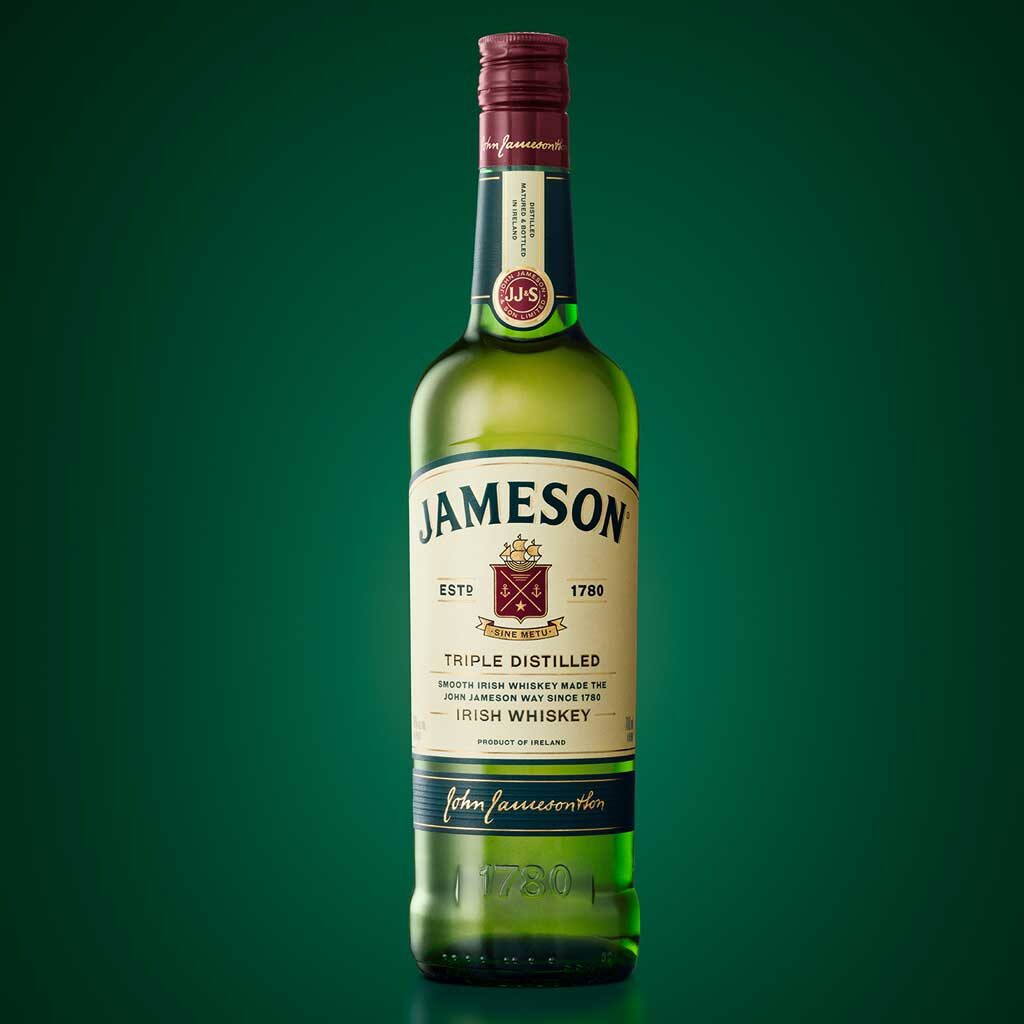
Jameson (Original)
Nose: Floral, sweet, fudge & grassy
Palate: Fruity, creamy, sweet & metallic
Mouthfeel: Thick & full bodied
Finish: Medium, sweet & spiced
Age: 4 years (minimum)
Casks: Ex-bourbon & sherry butts
Mashbill: Dual mashbill (Pot still malted and un-malted barley.) (Colum still maize & barley)
Strength: 80 proof / 40% ABV
Classification: Irish blend
Price: £24 / $29
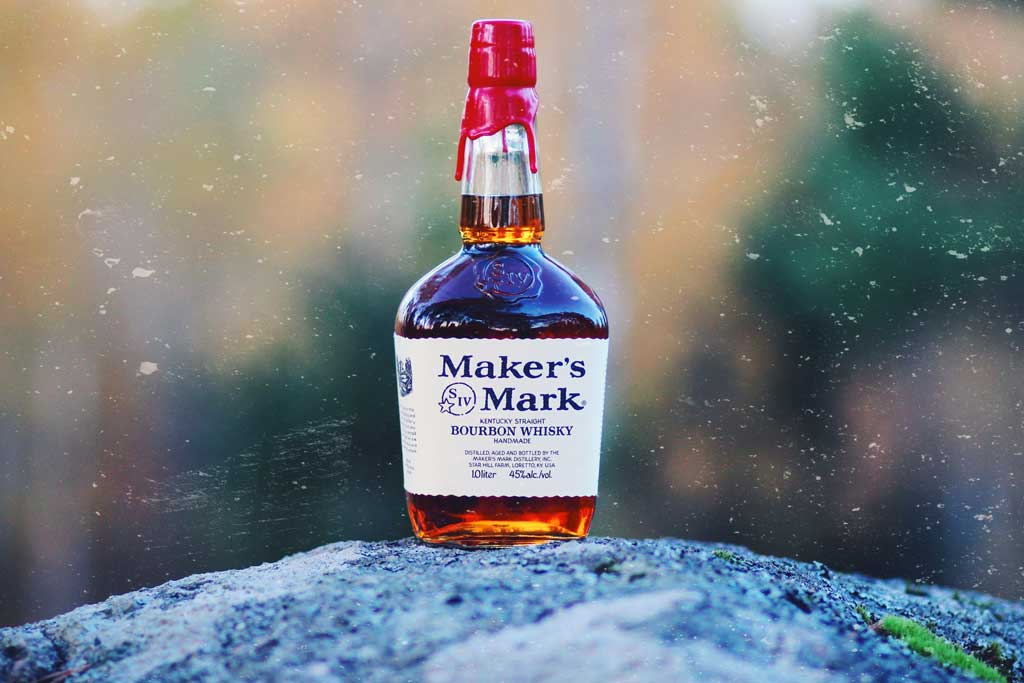
A closer look at Maker’s Mark
As the flagship bottle from Maker’s Mark, this is their top selling expression. If you’re unfamiliar with the brand, their mashbill is relitively unusual for a Kentucky Straight bourbon. In attempt to make a bourbon that ‘wouldn’t blow your ears off’, founder Bill Samuels Sr. sought after a less spicy flavour profile.
This led him to use red winter wheat in his grain recipe instead of the typical rye found in other bourbons. The result? A much smoother, softer whisky with plenty of flavour, just without the rye ‘heat’. As far as bourbons go, this is relitively unique within the market and is the signature character of the Maker’s Mark flavour profile.
Another interesting aspect is the brand’s spelling of whisky, without the ‘e’. As one of very few American distilleries to use this iteration, it’s actually a nod to the Samuels’ Scottish family roots. (Old Forester also call their call their spirits whisky too.)
But despite their unusual grain recipe and spirit spelling, Maker’s Mark still qualifies as a Kentucky straight bourbon. With a mashbill of 70% corn, 16% wheat and 14% malted barley, it’s one of the most popular wheated Kentucky bourbons on the market.
The bottle: In terms of packaging and aesthetics, Maker’s Mark are one of my all-time favourites. I just love the vivid red wax seal on the top. It’s an iconic detail that looks and feels great when you hold the bottle. There’s something nostalgic about peeling open the wax from the top, which fondly reminds me of my favourite edam cheese when I was a child. It’s a tactile experience and brings back nice memories – totally unrelated to bourbon mind you!
Nose: After the ceremonial wax removal, Maker’s Mark whiskey reveals a delightful scent that captivates your senses. I can immediately smell spiced oak, fruit and fragrant spice. The nose is deep with rich notes of honey, almond and campfire toasted marshmallow. (Another childhood memory, forgive me.)
With a little swirling, subtle notes of vanilla and butterscotch reveal themselves which brings an extra layer of complexity to its inviting bouquet. Having been aged for at minimum of five years, there’s an intoxicating oaky smell to this whisky which mixes wonderfully with scents of clove, cinnamon and nutmeg. To be honest, the overall smell is simple and good. I’m pleased with the first impression.
Palate: The first sip of Maker’s Mark confirms the aforementioned smoothness of this whisky, it’s like silk. There’s very little heat going on with little to no burn whatsoever. Straight out the gate, there’s a burst of honey sweetness that fills your mouth, which takes a moment to succumb to more of that oakiness as experienced on the nose.
I’ll be honest, I’m loving this bourbon so far. In terms of depth, it’s pretty basic. But there’s a lovely medley of caramel, vanilla and butterscotch that are like a pudding in my mouth. On the mid palate, some gentle spice comes through which I can only describe as cheerful and warming, sort of like a gingerbread cookie.
There’s a touch of dried fruit going on. I taste pear and dates with some roasted nuts. Overall, the flavour is sweet, very gently spiced and very moreish. I’d be quite pleased drinking this, tucked under a blanket on my sofa. No water required.
Finish: At the end of each sip, the sweetness fades and leaves an oaky, dry sort finish. Again, there’s a hint of gentle spice that lingers on the tongue which makes me want more of this tasty bourbon. It’s remarkably simple but really quite an enjoyable aftertaste. There’s no frills or weird herbal tang going on. Just everything I’d want from a whisky of this price point. Vanilla sweetness with oak. A very slight smokiness. It’s unpretentious and right on-point.
Value: Maker’s Mark would make an excellent but unique entry point to the world of Kentucky bourbons. Unlike many of it’s peers, the ryeless mashbill yields a silky smooth drinking experience that lack’s the typical bourbon ‘bite’. With very little heat and enticingly sweet flavour profile, this low cost bottle is a wonderfully creamy dram.
If this were your introduction to bourbon, there’s few other bottles that would be better for the price. For around $30 (£25 or so), I’d go as far to say this whisky might mislead you in some ways, as there’s usually more heat from similarly positioned, entry level bottlings. Bulleit or Four Roses Yellow Label spring to mind.
For new bourbon drinkers, this would be a nice place to start. For ‘seasoned’ connoisseurs, it’s a little simple – but I actually quite like that. As a gift, the red wax seal would certainly be a memorable touch. There’s little I can fault here.
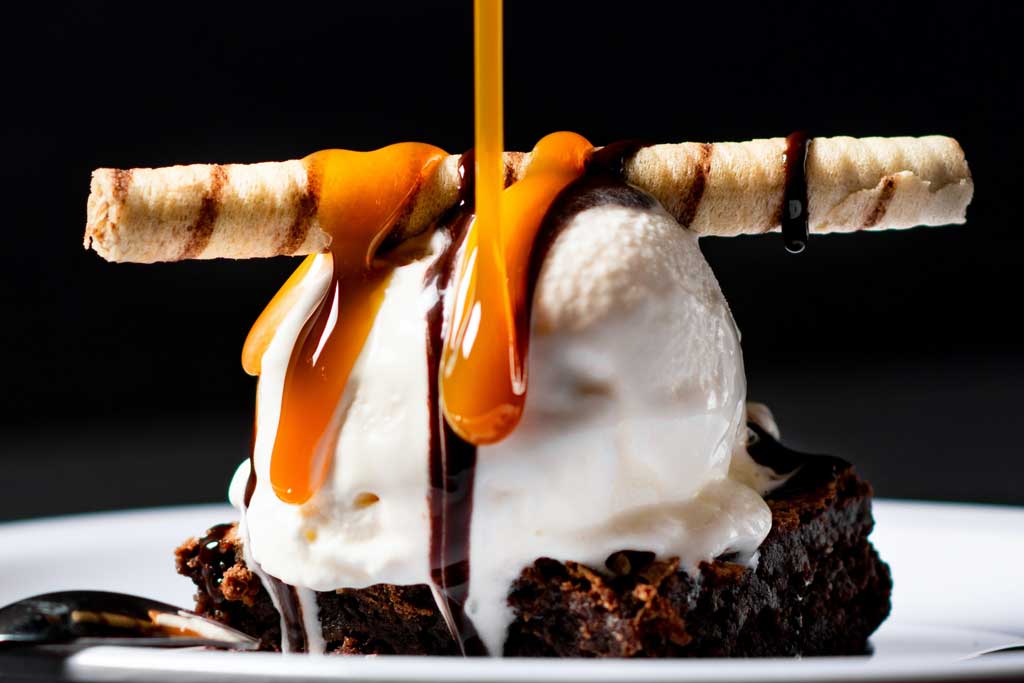
Maker’s Mark food pairings
For starters, Maker’s Mark whisky pairs wonderfully with smoked salmon or a light cheese platter. Serving it alongside a creamy brie is a great way to bring out the subtle notes of spiced oak, honey and almond. These savoury snacks will also help to prepare your palate for the smoky finish at the end.
For mains, smoked meats such as pork shoulder or beef brisket are an ideal choice for pairing with Maker’s Mark whisky. The sweetness of the whisky is complementary to the smoky flavours found in these dishes, while the oaky aroma adds an extra layer of depth. For something lighter, try grilled chicken with a whiskey glaze over top – the sweetness of Maker’s Mark helps to balance out any bitterness from the glaze.
For dessert pairings, Maker’s Mark whiskey pairs nicely with desserts that feature sweet and salty ingredients such as caramel popcorn or salted caramel ice cream. It complements these dishes perfectly by bringing out their sweet and savoury notes without overwhelming them. For something more indulgent try dark chocolate mousse served alongside Maker’s Mark – its deep flavour profile and subtle spiciness will make this dessert one to remember.
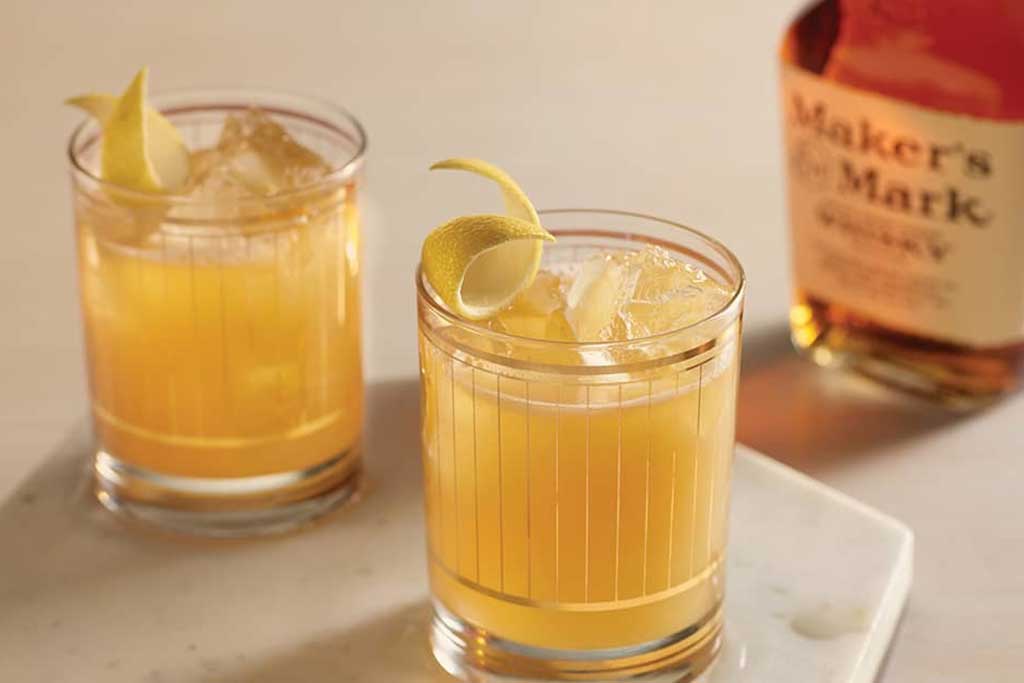
Maker’s Mark cocktail suggestion
The Gold Rush cocktail takes only minutes to make and is an exquisite honey-infused adaptation of the Whisky Sour. The combination of sweet, syrupy honey with the citrusy brightness alongside Maker’s Mark’s bold bourbon flavours creates a truly enjoyable sipping experience.
Ingredients
- 50ml Maker’s Mark bourbon
- 25ml honey syrup (2:1 honey & water)
- 25ml lemon juice
- Lemon wedge
Method
Add your bourbon, syrup and lemon juice to an ice-filled cocktail shaker. Shake and strain the mixture over ice in a rocks glass, finishing it off with a refreshing garnish of a lemon wedge. Serve.

A closer look at Jameson whiskey
Jameson is made at the new Midleton distillery in County Cork and is a blended Irish whiskey. Located beside the original 17th century distillery, this modernised site is one of the most technologically advanced in the world. Home to three of the largest operational pot stills in the industry (75,000 litres each) the distillery makes a variety of other whiskey brands alongside the Jameson production lines.
For this review, I’m sampling Jameson’s flagship bottle, often colloquially referred to as Jameson ‘Original’ or just ‘Jameson’. This insanely popular blend is made from a mixture of triple distilled pot still whiskey and triple column distilled ‘grain’ whiskey. Jameson source their barley from southern Ireland and their maize (corn) from northern Spain.
If you’re new to Irish whiskey, their governing body IWA (Irish Whiskey Association) stipulate that pot still whiskeys contain a grain recipe of at least 30% malted and 30% un-malted barley. This is one of the biggest differentiations between Irish and Scottish whiskies as the so called ‘green malt’ gives a grainier, spicier flavour profile compared to their Celtic cousins across the sea. In a sense, the use of un-malted barley plays a similar role to rye in American bourbons, which typically delivers a spicy flavour in your glass.
Before I delve into the tasting of Jameson, it’s also worth highlighting their method of triple distillation. Unlike Scotch, Irish whiskeys are three-step purified in either/both pot or column stills. This makes whiskeys like Jameson incredibly smooth, usually with a much higher proof/ABV% prior to blending and dilution. Resultantly, there’s very little burn to these spirits which is why Jameson has a reputation for being a very smooth whiskey to drink.
The bottle: Opening the Jameson bottle is far less theatrical than the Maker’s Mark. Sealed with a basic metal screw-cap (which seems to plague low-level blends) it’s comparably unexciting. I know it’s just a cap and it’s the flavour that matters most, but these details do add to the overall experience. Perhaps Jameson could use some green wax instead? (Kidding.)
Nose: Swirling the Jameson in my glass, the nose seems a little flat and distant. At first I notice a weak floral aroma, which is followed by a fudge sweetness. Not particularly strong or discernible, the overall aroma doesn’t really tell me what’s to come with regards to the taste.
With some more time to breathe (I’m really searching this glass now) I get slight wafts of grass and dry Madeira. It’s an organic sort of smell, but again, the aroma is fairly mild. It’s certainly not bad, but just difficult to pick out any strong characters or notes. Compared to the Maker’s Mark, it’s far less forthcoming.
Palate: On entry, there’s much greater flavour than what I experienced from the smell. I immediately taste a fruity sweetness made of pears, crisp apples and grapes which creates a nice tang in my mouth. As expected, the triple distillation lives up to its name. This whiskey is indeed very very smooth with no harsh edges whatsoever and a very mild heat. It’s creamy, like custard and velvety on the palate. Compared to the Maker’s Mark, I’d say this whiskey is similarly soft.
For me, the Jameson is okay neat. At 40%, I personally don’t find it too strong in terms of alcohol level. Without water, I’m quite happy sipping this blend on its own.
With a little ‘chewing’ I can taste further notes of sweet caramel and vanilla. This sweetness is pleasant, but not overly dominant as there’s also a lovely spiced warmth which builds on the mid palate. I taste cinnamon and clove mostly. I suspect this heat comes from the green malt used with the pot still portion of the blend.
Oddly, there’s a weird metallic sort of taste in this whiskey. I didn’t notice it early on, but it’s crept-in to the latter half, interrupting the sweetness. A bit of a shame as it overshadows the the overall drinking experience.
Mouthfeel: The mouthfeel of Jameson Irish whiskey is thick and medium-bodied. There’s a bit of graininess to this dram which gives a sort of sweet malty tacky texture. Overall it’s pretty smooth, with a velvety consistency that presumably comes from the triple distillation process. Its a creamy texture that coats the tongue while providing a pleasant warmth on the mid-palate.
Finish: The finish of is medium-length and balances between the sweet and spicy notes. After your sip, you’re left with a delightful honey flavour that lingers in your mouth. The winter spices are in there too which eventually subside at the tail end.
Price: With a wallet-friendly price tag of $30, Jameson presents remarkable value for money. It boasts an effortlessly smooth texture with the perfect blend of sweetness and spice that’s exceptionally easy to drink without any real harshness. While it may not be as complex as some other whiskeys, its well-rounded flavour is sure to please!
As Irish whiskeys go, there are certainly better but more expensive options available. However Jameson is accessibly affordable and can be found just about anywhere online. As an introduction to the blended Irish category, it’s not a bad place to start.

Jameson food pairings
For a starter, Jameson whiskey pairs wonderfully with a charcuterie board of cured meats, cherries, and cheeses. The sweetness of the whisky works in harmony with the savoury flavours of the cured meats to create a satisfyingly balanced flavour profile. The whisky helps to cut through the richness of the creamy cheese, while its subtle notes of dried fruit complement the tartness of the cherries.
For mains, Jameson whiskey goes well with barbecued meats, particularly beef and pork, as its subtle sweetness complements the smokiness of the meat. Other great options include roasted vegetables like potatoes or root vegetables with herbs to bring out the flavuor of the whiskey even more.
For dessert, Jameson makes a great accompaniment to puddings like crème brulée or chocolate mousse. It is also an excellent addition to fruit-based desserts such as apple pie and raspberry tarts. The sweetness of these dishes provides a perfect balance for the whiskey’s complexity and spices.

Jameson cocktail suggestion
For something sweet and vibrant, why not try this Strawberry Irish Basil Mule? It’s a simple cocktail that combines Jameson whiskey, muddled strawberries and basil leaves with ginger beer. The result is a refreshingly fruity and zesty drink with plenty of bold flavour.
Ingredients
- 50ml Jameson Irish whiskey
- 150ml Ginger beer
- 25ml Lime juice
- Fresh basil leaves
- Fresh strawberries
Method
Add 5 or so fresh strawberries and some fresh basil to an empty cocktail shaker. Measure in your lime juice and muddle with a spoon. Add the whiskey and ice before giving a good shake for 10 seconds. Strain into an ice-filled rocks glass and top with ginger beer. Garnish with basil and a sliced strawberry.
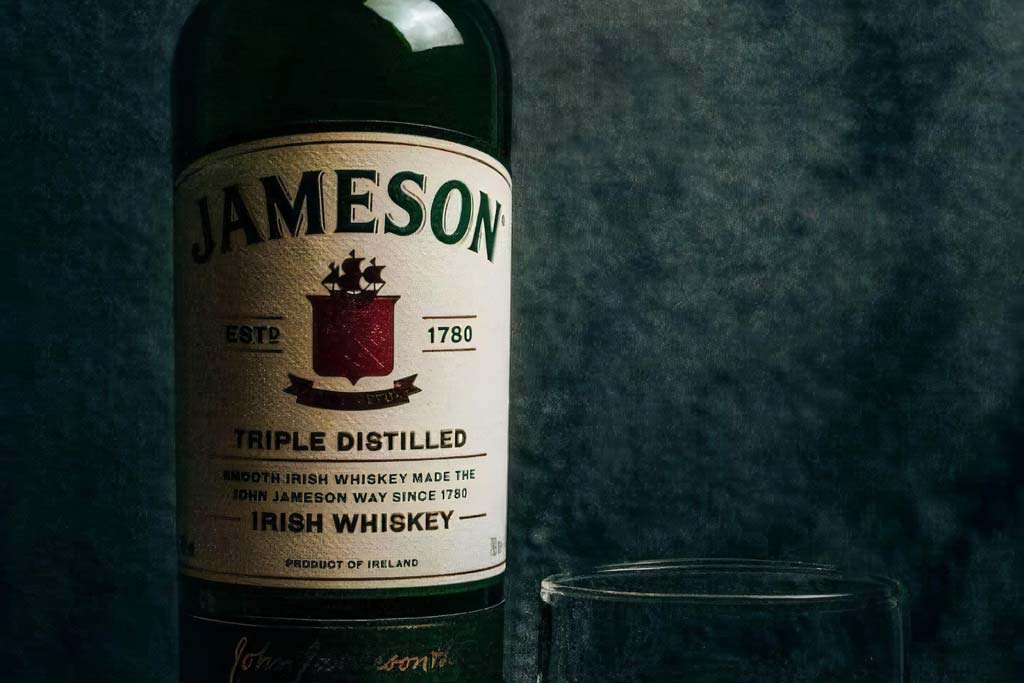
Final thoughts
Comparing Maker’s Mark vs Jameson was a little disjointed, but also quite fun. The fact that one is a bourbon and the other is an Irish blend makes these bottles distinctly different. However, when you look into how these whiskies are made, they share some interesting similarities.
Maker’s Mark is a gentle bourbon, known for it’s smooth grain recipe. The lack of rye makes it super easy to drink with an unusually mellow character which is easy to get on board with. For an entry level bourbon, it’s right up there with the likes of Bulleit, Evan Williams, Buffalo Trace or Four Roses’ Yellow Label. The winning aspect to this whisky (not whiskey) is the sweetness and very gentle spice.
Jameson has a little more going on in terms of flavour complexity. Sure, the nose isn’t that great, but the palate offers a balance of orchard fruit sweetness and winter spice ‘bite’. There’s more heat to this Irish blend than the Kentucky bourbon, which for me, has more depth and variation. However, I struggled a bit with the tinfoil taste that crept up on me. It wasn’t a welcome flavour and overshadowed an otherwise tasty whiskey.
Author’s recommendation
For something sweet and simple, go with the Maker’s Mark. It’s a gentle introduction to bourbon that doesn’t burn. It’s a pleasant option for anyone looking for a cheap bottle. But for greater depth and a little more ‘bite’, I’d go with the Jameson. Of the two, it’s more varied and is equally smooth to drink. For an entry-level bottle, it’s pretty ‘okay’.



